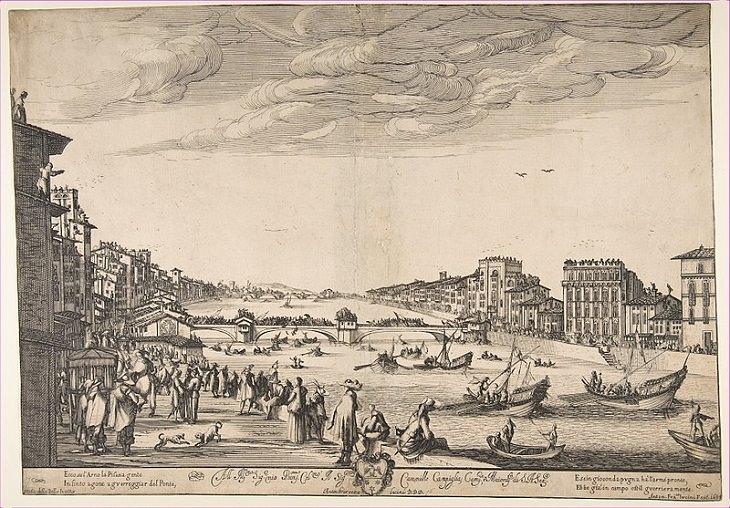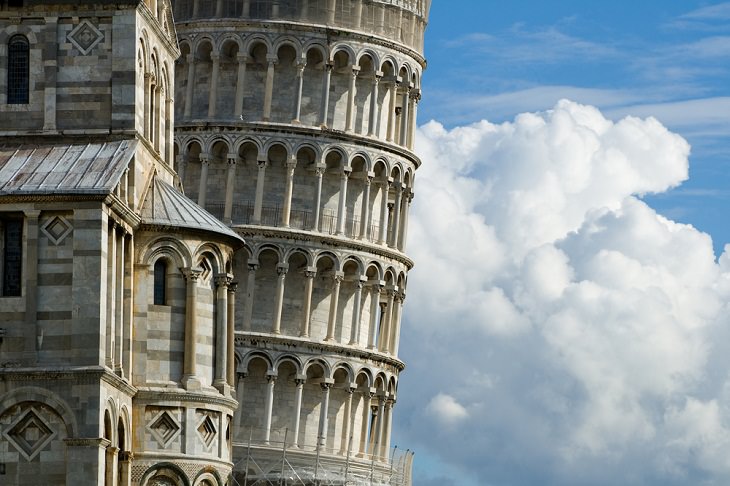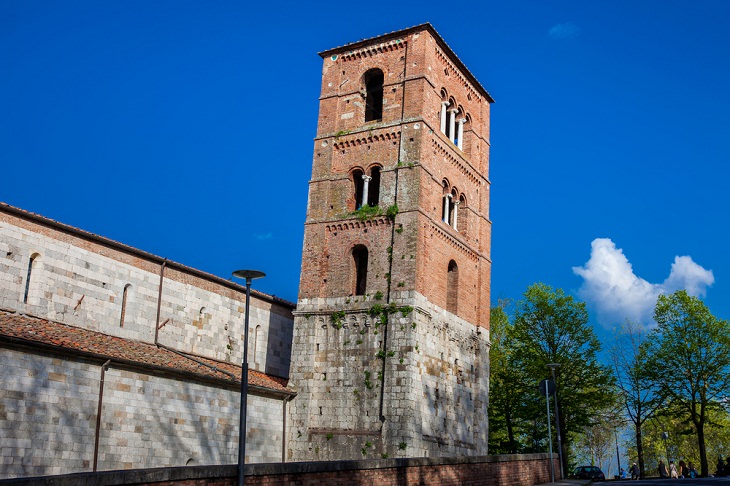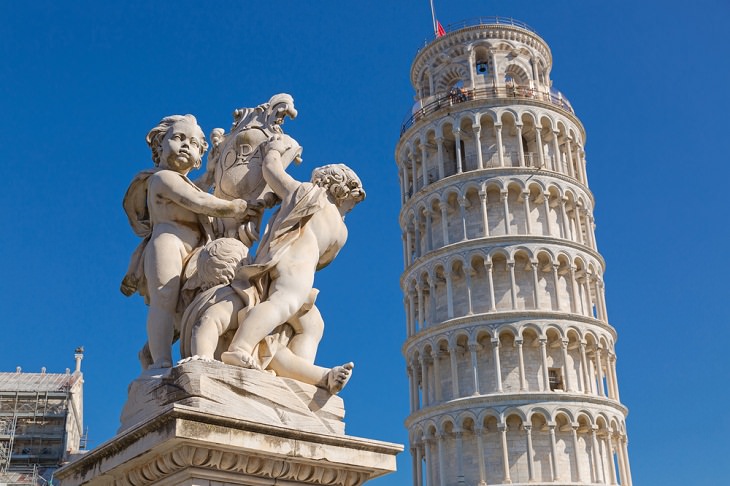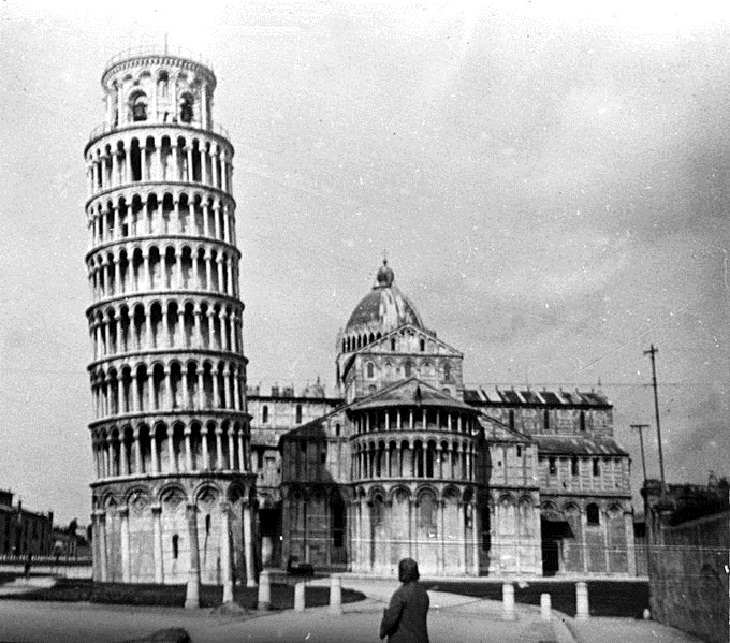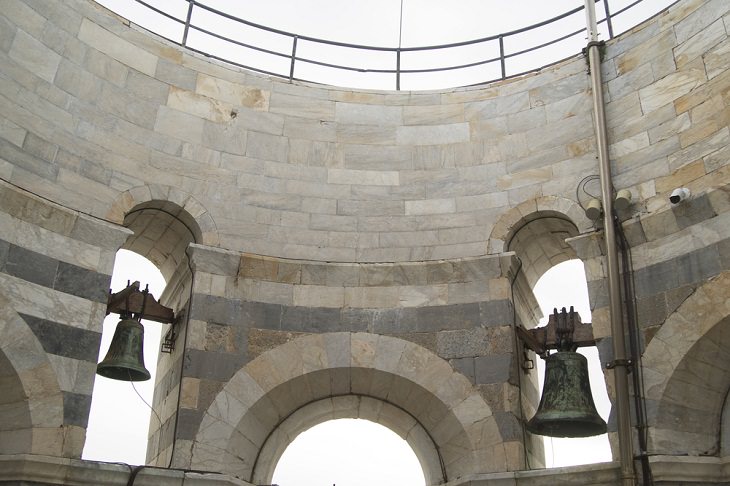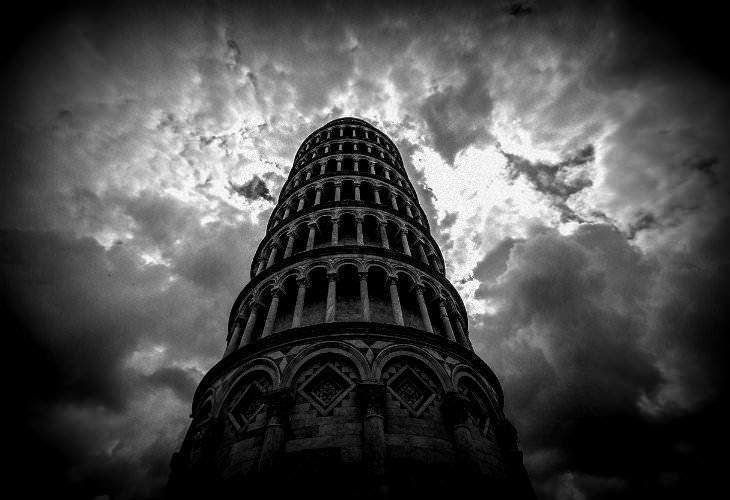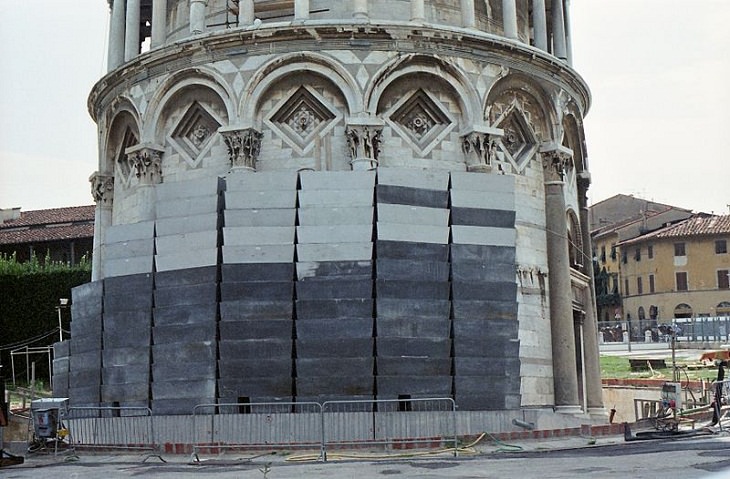A painting titled "Game of the Bridge, Pisa" designed by Italian artist Stefano Della Bella (Image source:
Wikimedia Commons)
The Leaning Tower of Pisa is a bell tower and was made to announce the rituals of medieval Catholicism in the Italian riverside city of Pisa. It was also supposed to give company to the public cathedral in the city.
Construction for the tower began in 1173 and about five years later, workers had already made it to the third story of the structure. Unfortunately, military strife with the nearby Italian states soon forced the construction of the bell tower to be pushed back and work didn’t resume until 1272. Eventually, the building was officially completed in 1372 - approximately two centuries after work on it first started. Many generations of architects are said to have passed through over those two centuries of construction.
2. The tower was built with plundered money
In the 12th century, Pisa was a flourishing medieval Italian city. The then government had ransacked Palermo, Sicily, and wanted to show off all that acquired wealth. For this, they decided upon creating the “Field of Miracles” which would go on to become the land where the Leaning Tower of Pisa would reside along with a Cathedral, a Baptistery, and a cemetery. The bell tower was supposed to be the tallest of its age but some architectural follies didn’t allow it.
3. There are other leaning towers of Pisa in Pisa!
Church of San Michele degli Scalzi in Pisa
Did you know that the Leaning Tower of Pisa is not the only leaning tower in the city? Yes, there are a few more leaning towers in Pisa, owing mainly to the soft subsoil of the entire area. The bell tower of the Church of St. Nicola, a 12th- century church located half a mile (0.8 km) south of the Tower of Pisa, and the San Michele Degli Scalzi church, an 11th-century structure in the eastern part of the city, have similar issues. While San Nicola leans only mildly as its base is rooted beneath the earth, the San Michele Degli Scalzi church has a substantial 5-degree tilt.
4. It’s been leaning for over 800 years
There’s a widely assumed misconception that the Leaning Tower of Pisa has tilted so much since it’s so old. But that’s not true. The building started to lean just five years after work started on its construction. So, what was the reason? The soil mechanics and the area of engineering are said to have played a role. The shifting clay and sandy soil were too unstable to support the 14-ton bell tower structure and hence it started to tilt. The architects tried to correct the lean by adding a second story to the tower. Unfortunately, this didn’t work and the ground began to give further.
According to the Tower of Pisa website, “Over the next 800 years, it became clear the 55-meter tower wasn’t just learning but was actually falling at a rate of one to two millimeters per year.”
5. The iconic structure has leaned in multiple directions
Believe it or not, the Leaning Tower of Pisa switched directions at one point in history. When construction on the building resumed in 1272, several engineers tried to correct its slant by adding stories atop the existing three straight upwards. However, that threw off the center of gravity and the tower simply began to lean in a different direction. As construction continued and more stories were added, it swung back to its southward tilt. It has stayed in that direction ever since.
6. It has withstood as many as four earthquakes
The Leaning Tower and the apse of the cathedral of Pisa, Italy, in 1931 (Image source:
Wikimedia Commons)
For such a massive leaning structure that’s been built on soft soil, it’s remarkable that this tower has managed to survive not just two world wars and millions of tourist visits but as many as four earthquakes as well. One of those quakes was reportedly greater than 6.0 on the Richter scale. Apparently, the soft foundational soil beneath the tower has actually prevented it from collapsing.
In 2018, a team of engineers from the University of Bristol in the UK investigating why the tower never fell, published a report stating that a phenomenon known as "dynamic soil-structure interaction (DSSI)" below the building helped in keeping it standing. Basically, the tower's height and stiffness, when combined with the softness of the foundation soil, stop the structure from reverberating as much as it would if it was built on more solid ground.
“Ironically, the very same soil that caused the leaning instability and brought the Tower to the verge of collapse, can be credited for helping it survive these seismic events,” said George Mylonakis, a professor at the University of Bristol.
7. It has seven bells which have not rung since the last century
As we mentioned before, this ancient building is a bell tower and has seven bells at the top which were installed in the bell chamber over four centuries. They are huge and the largest one weighs around 8,000 pounds (3,628.7 kg). Each of the bells has interesting names - from Il Crocifisso (the Crucifix) and L'Assunta (The Assumption) to La Terza (The Third).
The bells haven’t been rung since the 20th century. That’s because engineers and restorers are worried that their heavy moments may further affect the tower’s tilt.
8. Mussolini tried to fix the tower but made it worse
Italy’s 20th-century dictator, Benito Mussolini, wasn’t too fond of the Leaning Tower of Pisa. He considered its crooked slant a national disgrace and wanted to fix it. For this, he allocated resources to drill holes at the base of the tower’s foundation and pumped tons of grout and mortar into it. The dictator believed that this would stabilize the entire structure and set it straight. However, this created an even heavier base and made the tilt much worse.
9. The Allies intended to destroy the tower during WWII
During World War Two, American soldiers were given orders to destroy all buildings in Italy that could potentially serve as a lookout point for the enemy soldiers. It’s said that the German army had used the Tower of Pisa as a military base and the Allies had it under its target. However, when they arrived on the scene, they were so blown away by the building’s beauty and the surrounding Field of Miracles that they decided against leveling the area.
10. It’s stable… for now
Currently, the Leaning Tower of Pisa is stable. After years of trying to fix its slant and failing, precise stabilization efforts were taken again from 1990 to 2001 where seventy metric tons of dirt were removed from underneath the taller side of the tower. This helped straighten the structure by 17.7 inches and in 2008 engineers found that the tower is officially no longer moving. However, they also believe that the stability will last 200 years, after which further balancing efforts would be needed to keep it stabilized. Let’s hope that by that time, we would have developed some technology that can keep the tower safe for many more centuries to come.
Share this post with friends and family!

